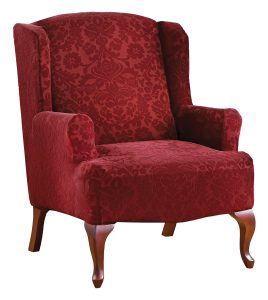Most homeowners restyle their homes to keep up with current trends or to fit their own growing style changes. As you grow into your style, your home décor may need quite the makeover. New furniture can be expensive, and it may be hard to let certain timeless pieces go. The good news is that you can restyle or repurpose old furniture to fit your growing style. Whether it be something as simple as a new paint job or as drastic as a complete repurposing, old furniture can be given new life and remain a stylish piece in your home for years to come.
Restyling Old Furniture
 When restyling old furniture, it is important to have a strong grasp of the theme you are trying to create for your new home décor. While you may not be able to change the fundamental structure of the furniture piece to fit your other pieces, you can play with the color and fabric choices as well as accents and hardware. Matching these little elements together will create a cohesive but unique look for your home. Be sure to keep an eye on elements such as hardware pieces in your room and make sure all the furniture fits cohesively. While some of your pieces may be vastly different, it is important to tie them all together somehow so that your room does not look like a mismatch of items.
When restyling old furniture, it is important to have a strong grasp of the theme you are trying to create for your new home décor. While you may not be able to change the fundamental structure of the furniture piece to fit your other pieces, you can play with the color and fabric choices as well as accents and hardware. Matching these little elements together will create a cohesive but unique look for your home. Be sure to keep an eye on elements such as hardware pieces in your room and make sure all the furniture fits cohesively. While some of your pieces may be vastly different, it is important to tie them all together somehow so that your room does not look like a mismatch of items.
Color is a huge component of restyling furniture. If you are looking to modernize your home’s style, you may be looking to update your light or medium wood finishes. For modern homes, dark finishes are quite popular. Transforming a light wood side table into a sleek-black piece might be daunting, but, in reality, it can be quite easy. One tip to make your black piece look elegant and store bought is to use black stain rather than using a black paint. The stain is thinner and sheerer than paint, so it will not look heavy on the furniture piece. It is important to sand down your original furniture piece and then apply the stain in multiple thin coats. If you happen to get bubbles where the original color shows through, don’t worry! Simply go over those areas again with fine grit sandpaper and clean off the debris. Apply a few more coats, and then let it dry.
Alternatively, you can use bright colors on select furniture pieces to make them a focal point of the room or a great conversation piece. When painting any piece of furniture, it is best to remove all hardware so that you can ensure the paint is applied evenly everywhere. This also gives you the opportunity to switch out hardware if you feel that the pieces are too dated or simply just don’t fit with your new style. You may want to replace bail or ring pulls with simple knob or bar pulls. This is a simple way to bring your vintage looking pieces into the modern era or make inexpensive furniture look more luxurious.
 When replacing the hardware on your furniture, it is important that you take pictures and measurements with the current hardware installed. This is so you can have an idea of how large or small you can go with the hardware size as well as have a reference point to determine what styles might go best with the framework of your piece. Also, take into consideration where this piece of furniture will be placed and how often the hardware will be used. This is important in terms of comfortability and ease of clean. Once you have made your decision, be sure to buy extra pieces of hardware so you have a spare in the house in case anything breaks.
When replacing the hardware on your furniture, it is important that you take pictures and measurements with the current hardware installed. This is so you can have an idea of how large or small you can go with the hardware size as well as have a reference point to determine what styles might go best with the framework of your piece. Also, take into consideration where this piece of furniture will be placed and how often the hardware will be used. This is important in terms of comfortability and ease of clean. Once you have made your decision, be sure to buy extra pieces of hardware so you have a spare in the house in case anything breaks.
For those that would like to keep or create an antiquated look, chalk paint does wonders. For example, chalk paint is great for creating a rustic look with its matte finish that creates the illusion of a velvety texture. These paints come in a wide range of colors and can be lightened, darkened, or even mixed together. For an even stronger antiquated look, use two different colors and a sandpaper technique to give the furniture a worn look. With this technique, you can pick two different colors that you think fit your new décor style the best. First, you will go over the furniture with a base coat in one of your colors. Make sure it is evenly applied and dries well. Next, use your second color and apply a couple more coats on the furniture. Then, go over parts of the finished product with heavy sanding to reveal some of the base color. This will give your furniture piece an antiquated and lived-in look without all the years of wear and tear.
Re-upholstering furniture is a sure-fire way to give your favorite pieces new life. Whether you decide to undertake the re-upholstering yourself or choose to take your pieces in to a professional, there are a couple of things you should keep in mind. Before you go crazy looking for fabrics and patterns, you must inspect the furniture pieces thoroughly and determine whether their structure and frames are sound. Additionally, you will want to make sure any cushions and seats are clean and free from things that may cause future headaches (i.e. broken springs, insects, etc). Re-upholstering a piece of furniture that has been compromised and may only last another couple of years can be frustrating and quite a hit on your wallet. In these more severe cases, you will definitely want to take your furniture to a professional so that they can help you rework the pieces and regain some of the integrity that was lost.
With certain pieces you may be able to change out the legs to give the furniture frame a more updated look. You can do this in conjunction with reupholstering and give the piece a complete overhaul or keep all other features the same and simply use new legs to change the look and height of a piece. This can often be a cheap and easy fix, and it can completely change the way your furniture looks and feels in your revamped space. Think outside the box, and don’t be afraid to add legs to otherwise grounded pieces. Some furniture pieces may appear bulky and do not fit with your new look. Maybe you have an old dark wood dresser that you are trying to modernize. A nice light colored paint job and some new legs can elongate the piece and give it a more light and modern look.
Repurposing Old Furniture
 One common term associated with repurposing old furniture is upcycling (AKA creative reuse). With upcycling, you take old or unwanted materials and transform them into new, better quality materials with a purpose. For example, say you have an old door in your house that you want to replace with French doors. It is a beautiful piece of wood that you hate to see thrown out, but it just does not fit with the style you are trying to create for your home. Instead of tossing it out, you may cut it down to size, sand it, apply a finish, attach some legs, and repurpose it into a rustic dining room table with a raw feel to it. If your door has grooves or dips in it, as most do, you can overlay a piece of glass on the table so that there is a flat surface to dine on all the while allowing the wood to be visible.
One common term associated with repurposing old furniture is upcycling (AKA creative reuse). With upcycling, you take old or unwanted materials and transform them into new, better quality materials with a purpose. For example, say you have an old door in your house that you want to replace with French doors. It is a beautiful piece of wood that you hate to see thrown out, but it just does not fit with the style you are trying to create for your home. Instead of tossing it out, you may cut it down to size, sand it, apply a finish, attach some legs, and repurpose it into a rustic dining room table with a raw feel to it. If your door has grooves or dips in it, as most do, you can overlay a piece of glass on the table so that there is a flat surface to dine on all the while allowing the wood to be visible.
The important thing to remember with upcycling is that the old pieces can be used to fit a new purpose or need. You may be looking around your room and thinking that you need a new end table or a new ottoman. With these functionalities in mind, you can look at old pieces of furniture and find ones that can be modified to meet these needs.
Changing the style of your home does not have to be a painful and costly process. By restyling or repurposing some of your old furniture pieces, you can save money and keep some familiarity in your home. Many of these projects are great for the DIY enthusiast and are quite easy to employ. With this article in mind, you will be better suited to find ways to make old furniture fit in your new style. ![]()
Katerin Rodriguez
Home & Yard Magazine




